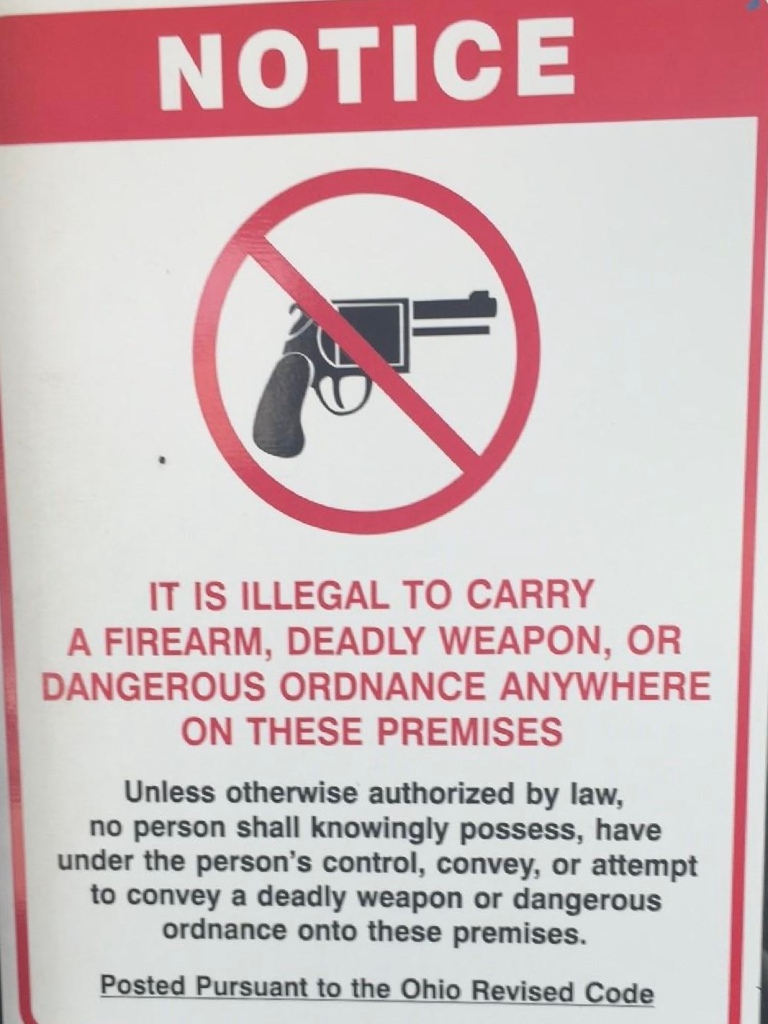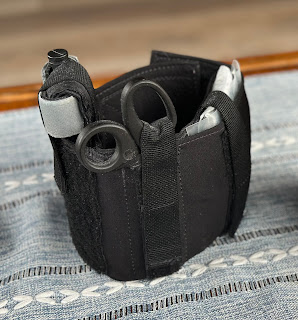The views expressed in this article are those of the author and do not necessarily reflect the views of Gunset Training Group or its affiliates.
Click HERE to view the original post on the GunSnobbery Blog
Author’s note: this is part 8 in a series of educational posts I am going to write about State of Ohio and federal weapon and firearm laws. Part 1 can be found here. This post does not offer legal advice. I am not a lawyer. I am a Certified Firearm Specialist through the International Firearm Specialist Academy and the State of Ohio certifies me to teach Ohio’s weapon laws in the Basic Police Academy. I’ve spent quite a bit of time studying federal law and Ohio’s laws in 30 years on the job. More than anything, this series of posts is an attempt to educate people on portions of the law and to show them where they can find the laws so that they can educate themselves further. Please consult with an attorney who specializes in firearms and weapons law if you have questions that require a legal opinion. If you are a law enforcement officer, check with your jurisdiction’s legal counsel for guidance. And remember, not all attorneys are created equal. And keep in mind that laws, interpretations of laws and definitions change. So what was current at the time I published this article may have changed over time.
If you haven’t read the first 7 articles in this series, you may find it beneficial to start with the first article and work your way through them since often times they build on top of one another. In the last article I finished talking about Ohio Revised Code 2923.12 – Carrying Concealed Weapons. In the next few articles I will discuss several locations that Ohio specifically prohibits most people, even people with concealed handgun licenses, from carrying their concealed pistols. Many of these prohibited locations are listed in Ohio Revised Code 2923.126(B).

2923.126(B)(1) prohibits carrying a concealed handgun in the following locations:
- Police Stations
- Sheriff’s Office
- Ohio State Highway Patrol (OSHP) Posts
- Premises controlled by the Bureau of Criminal Identification and Investigation (commonly referred to as BCI)
- Correctional facilities, jails, detention centers and workhouses
- Airport passenger terminal beyond the security checkpoint or other security measures that restrict access
- Facilities maintained by the Department of Mental Health and Addiction Services (DMHAS)
- Facilities maintained by the Department of Developmental Disabilities (DDD)
Police stations, Sheriff’s Offices and OSHP posts are pretty obvious and I doubt you would ever end up in one of them by accident. BCI offices; however, may not be as obvious. If you ever see a gold star on a door that says Ohio Attorney General BCI (see below), don’t go in there with a concealed handgun.

Let’s talk about correctional facilities because they are unique when discussing Ohio weapon’s laws. Although 2923.126 tells people who have concealed handgun licenses that they cannot carry into a correctional facility, there is another statute in a completely different chapter that covers weapons in correctional facilities. Ohio Revised Code 2921.36 deals specifically with conveying certain items into a correctional facility. Some of those items include firearms (deadly weapons), ammunition and firearm parts.

Why, you ask, are ammunition and parts specifically listed in this section when they are not listed in other sections? Well, inmates can be ingenious when they put their minds to it and they have been known to make homemade pistols from routine items they can get their hands on while they’re in prison. I like to tell my students that quite often, laws are made in response to a situation that happened in real life that a law didn’t cover. So new laws are made. Fun fact – if the law didn’t cover ammunition and parts, someone could smuggle ammunition into a prison and give it to an inmate and there would be no state law (that I know of, anyway) that prohibited the inmate from possessing it. Unlike federal law, state law does not prohibit convicted felons from possessing ammunition or firearm parts.

Although state law prohibits carrying concealed handguns beyond the security and bag check station of an airport, that does not mean you cannot travel with your handgun. You just have to make sure you follow TSA’s rules for doing so. And make sure you check all of your carry on bags for loose ammo or extra magazines. Double check. Triple check. So you don’t end up on the news.


State maintained mental health and developmental disabilities facilities are also on the list of prohibited carry zones. There are six state psychiatric hospitals and eight developmental centers around the state. What I don’t know is whether there are other, smaller facilities that DMHAS and DDD maintain around the state. The bottom line? If you do business with or work in fields that routinely have contact with entities serving those with mental health issues or developmental disabilities, be careful about carrying into any of those facilities unless you know they don’t fall under this umbrella.

Schools, courthouses and liquor establishments are going to get their own article. I won’t be spending time on them in this article other than to say – make sure you understand the restrictions, even for those with a concealed handgun license, before you carry or try to carry into them.

(B)(5) is all about institutes of higher education. If you’re going to a college or university for any reason, just realize you almost certainly will need to keep your concealed handgun locked in the car. Although the law now provides a mechanism for college administrators to allow concealed carry, I only know of one university in the state that actually allows anyone to do so. And that university only allows a very small number of staff members to do so and not the student body.

If you attend church somewhere, you need to have the permission of the church to carry there. Having spoken with and done security surveys for a lot of churches, I know that churches usually fall within one of four categories:
- Prohibit carry by anyone that is not a law enforcement officer
- Prohibit carry by anyone that isn’t a law enforcement officer or a member of their dedicated security staff
- Allows anyone and everyone to carry if they want to
- Allows certain church members to carry with permission
If you attend a church and the church allows people to carry with permission, make sure you get the permission from someone that actually has the authority to grant that permission. Depending on the church, it could be the pastor or minister, but don’t assume that is the case. Churches operate differently and some churches that I have talked to don’t give their pastor (or priest/rabbi/imam) that authority. I would also suggest getting the permission in writing if the church only grants permission to certain people. Church leaders come and go, so that written permission may come in handy if the leadership changes.

(B)(7) deals with government buildings. This covers buildings owned by the state and political subdivisions of the state. Most political subdivisions of the state are pretty obvious – cities, villages, townships and counties. Others are not so obvious – like Agricultural Societies/Fair Boards (the jury is out on whether an Ag. Society is a political subdivisions as it applies to gun laws like I discussed here). Now, remember there are two exceptions to this statute that may allow you to carry your concealed handgun into those buildings:
- The building in question is primarily a “shelter, restroom, parking facility for motor vehicles, or rest facility”. They had to add this exception after the CCW law was first passed. Why? Because state agencies like ODNR considered an outhouse at John Bryan State Park to be a government building. So concealed carry was not allowed in the outhouse (true story, I called and talked with the ODNR officials at John Bryan State Park and asked). Yes, that was ignorant. This covers rest stops along the interstate and restrooms at parks.
- The state or political subdivision has a policy that allows for the carrying of concealed handguns in their buildings by qualified people. I don’t know many political subdivisions that allow this, but the ones I do know are specific county elected officials (auditors, treasurers, etc.) that allow concealed carry in their offices/buildings. Just remember, the default setting is you cannot carry there. Make sure they allow it before you carry into a government building.

These 11 words cover quite a bit of the country. The United States Concealed Carry Association has a great list of federally prohibited locations. Some of them are pretty obvious, but the one I think will shock or surprise most people deals with property controlled by the U.S. Army Corps of Engineers (COE).

The COE controls a lot of land and parks. A LOT OF LAND. Go to a lake with a dam? There’s a good chance the COE has something to do with that lake or park. Here is a great video from the Armed Attorneys YT channel that talks about the gun ban on COE controlled land. I went driving with my daughter the other night and we ended up at Buck Creek State Park near Springfield, OH. Guess what insignia was all over that park? You guessed it, the COE Castle.

18 U.S.C. 930 is the federal law that covers carrying “dangerous weapons” in federal facilities. Make a note that this includes more than just firearms and includes knives with a 2.5” blade or longer.

If you’re like me and you like to go to military museums, keep in mind that museums run by the federal government fall under this prohibition. It is unfortunate, but there it is. If you are traveling with your firearm and want to stop at a museum but don’t plan on staying in the area long term, one option you have is to see if there are any local gun shops that can help you out. When I visited the Pensacola area last year I saw a sign in a local gun shop that would store firearms for people that wanted to visit the National Naval Aviation Museum.

That’s all for this article. In the next article I will discuss private property owners and the law regarding what they can or cannot do when it comes to carrying concealed weapons.



